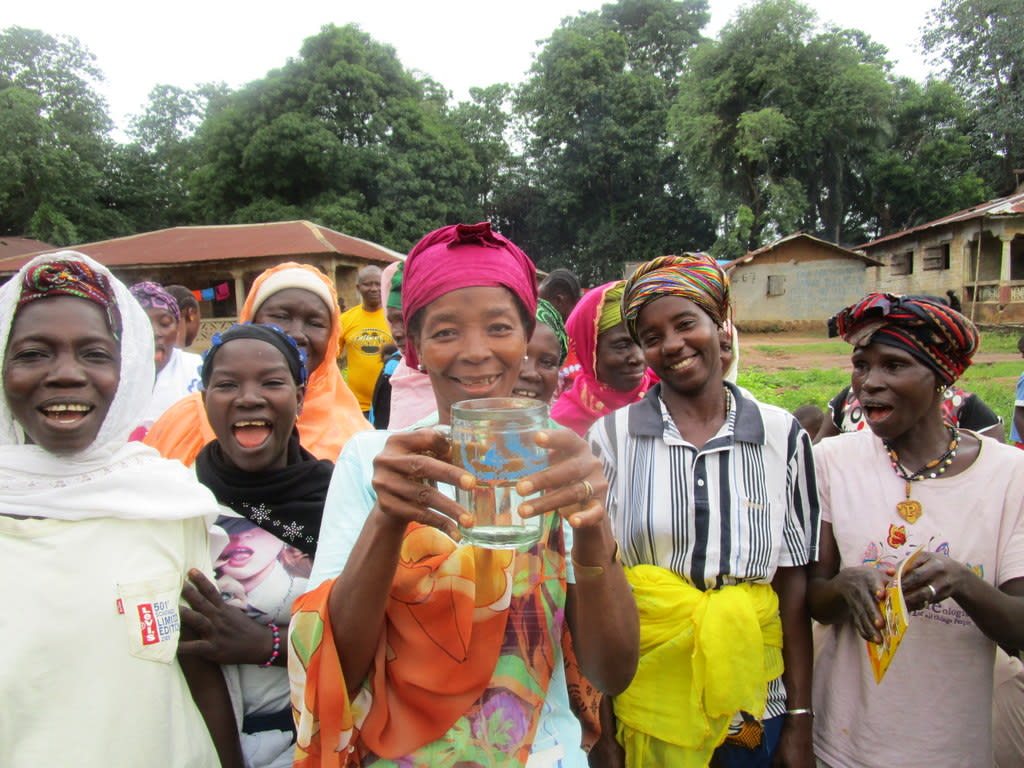This project is a part of our shared program with Mariatu’s Hope of Sierra Leone. Our team is pleased to directly share the below report (edited for clarity, as needed).
Welcome to the Community
Mayaya is highly populated by the Susu tribe. This community depends on fishing, farming, gardening and petty trading for their livelihood. Young children as well as women and men go to the wharf to fish enough for daily survival. When a boat arrives, the entire village is mixed up. Pupils leave their classrooms, women leave their pot on the fire and some even leave their prayers; nothing is as important to them as fish.
People living in this community largely depend on fishing and farming. The women generate small income from the cash crops like: cucumber, cabbage, tomato, pepper, and potato greens. As for men, after catching a large enough amount of fish, they clean and separate them into some to sell in the market and some for their own homes. There are also the petty traders who sell soap, sandals, and other items that people might want to buy. Many will walk for miles with baskets on their heads, full of the product they want to sell.
Mayaya means "snake village." This name came about when Pa. Korkery came as the first settler and only found snakes all over the place. He moved to the wharf and built a house there, and people joined him over the years.
Some houses are built with cement and some with mud, with the mud homes being the oldest. Mayaya is a huge hub for everyone in the chiefdom to buy their fish.
Mayaya is inhabited by all Muslims. Every other morning at around 5 AM, elders go to the mosque for their suba prayer. After prayers, mothers start preparing food for the family and the children sweep and do other chores. The family will sit together and eat before they leave for their different destinations: swamp, market, river or school. They have no lunch, but later in the day at around 5 PM the mother will prepare dinner.
Water Situation
Mayaya is so densely populated that we drilled a borehole last year to help alleviate the water shortage. Beyond this one source, there is an older hand-dug well that we monitor.
We make quarterly visits to check on these two wells, because it's important they're up and running for the hundred living here. The recent borehole installation has been doing wonderfully, but we noticed a change in the hand-dug well. As the rains diminish, the water in the well no longer outlasts the dry season.
With the hand-dug well down, the new borehole gets extraordinarily crowded. There are long lines at the pump, forcing those who get there late to fetch water from the swamp. It's during these dry months that waterborne disease once again becomes a reality.
Sanitation Situation
Less than half of households living in this area of Mayaya have their own pit latrine. It's common for those who can't afford to build one to share with their neighbor. Without a kindly neighbor to share with, some families must resort to open defecation. The typical pit latrines in this community are either mud or cement walls built around the pit. Roofs are made of tarps, rice bags, or brush.
There are a few hand-washing stations here, most likely resulting from our engagement with Mayaya last year. Over half of homes have helpful tools like dish racks and clotheslines for safely drying belongings.
Plans: Hygiene and Sanitation Training
There will be hygiene and sanitation training sessions offered for three days in a row.
Not many hand-washing stations were observed here. After our visit, the hygiene and sanitation trainer decided it would be best to teach community members how to build a tippy tap (a hand-washing station built with a jerrycan, string, and sticks). They will use these tippy taps for hand-washing demonstrations, and will also teach about other tools like dish racks and the importance of properly penning in animals.
These trainings will also strengthen the water user committee that manages and maintains this well. They enforce proper behavior and report to us whenever they need our help solving a serious problem, like a pump breakdown.
Plans: Well Rehabilitation
The well marked for this overhaul is dry for half of every year and needs major work to supply adequate, clean water to the community year round. The pump will be removed, and a man will be lowered inside with a hand auger. This hand auger will allow the team to drill several meters deeper to hit a sufficient water column that will ensure the well supplies water throughout the drier seasons. As the team drills, casing will be installed, transforming this hand-dug well into a pseudo-borehole. PVC piping will connect this lower system directly to the pump, a construction that we know will also improve the quality of water.
Once this plan is implemented, everyone within the community will have access to safe drinking water in both quality and quantity, even through the dry months.

 Protected Dug Well
Protected Dug Well

































